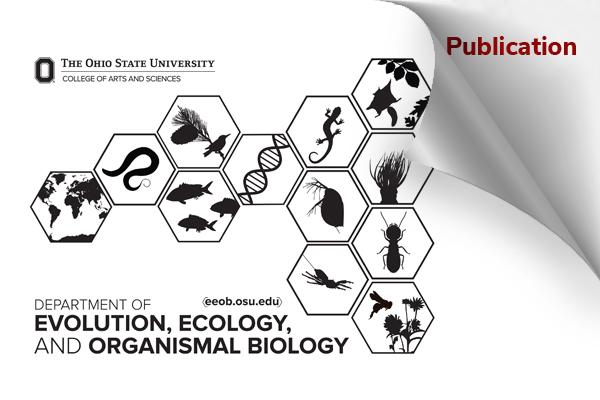April 2, 2025
EEOB Publication - Pennock

The effect of turbidity on foraging by prerostrum juvenile Paddlefish
Ethan Hood, James M Long, Daniel E Shoup, Casey A Pennock, Andrew R Dzialowski, Jason D Schooley. 2025. Transactions of the American Fisheries Society, vnae007, DOI: 10.1093/tafafs/vnae007
Abstract
- Objective
A previous study evaluating restoration success of Paddlefish Polyodon spathula suggested that excessive turbidity in lakes and rivers may inhibit foraging by juveniles prior to the development of the rostrum. Although a Paddlefish's rostrum, which contains electroreceptors, helps the fish to locate zooplankton prey, the prerostrum stage lacks many of these electroreceptors, potentially affecting foraging in highly turbid waters. To evaluate this hypothesis, we conducted a series of laboratory experiments in small aquaria by varying the level of turbidity measured as Secchi tube depth: >95 (clear tap water), 40, 20, 10, or 5 cm. - Methods
For each foraging trial, approximately 300 zooplankton were added to the aquaria, followed by three postlarval Paddlefish, which were allowed to feed on the zooplankton for approximately 18 h. After the 18-h period, Paddlefish were removed and dissected and the zooplankton in the gut were counted to quantify foraging success. - Results
From three experimental trials, we observed statistically significant nonlinear relationships for two trials, which included the largest fish tested. The smallest Paddlefish size-class showed no significant trend in foraging among turbidity treatments. However, the subsequent trials, which contained larger Paddlefish, both showed unimodal responses, with the highest foraging observed at moderate (30–50-cm Secchi tube depth) turbidity levels. - Conclusions
High turbidity and excessively clear water both appear to affect foraging by juvenile Paddlefish before the rostrum is fully developed, depending on fish size. Understanding this relationship can further influence management and restoration projects directed at this species.
